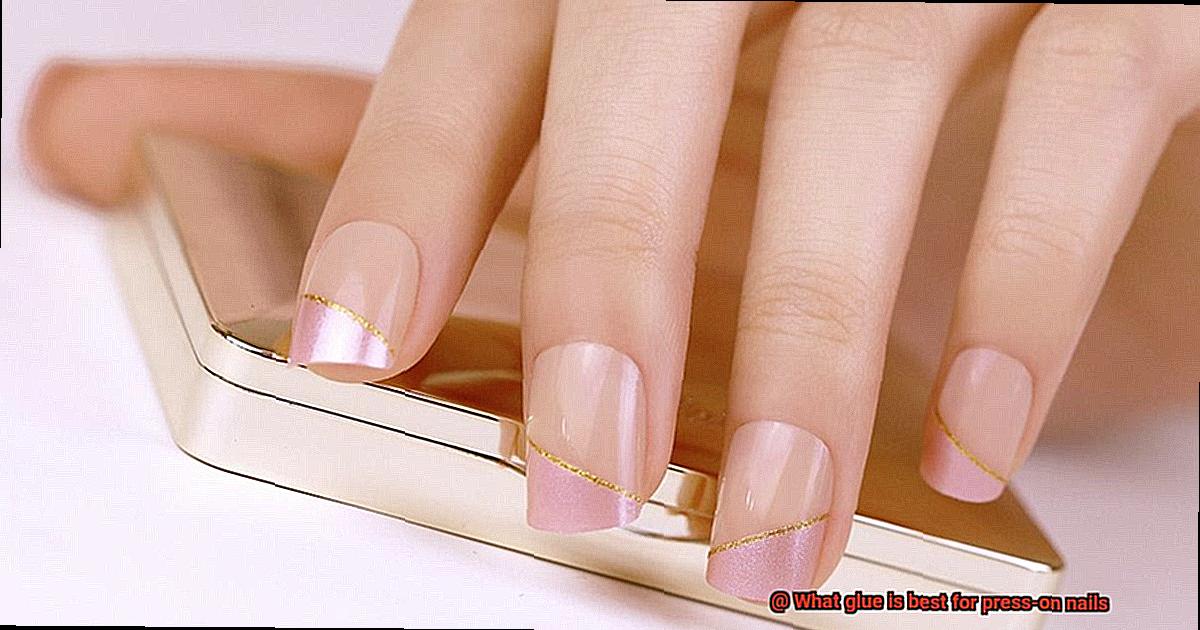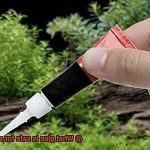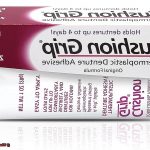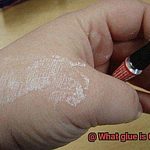Looking to flaunt those gorgeous nails at your next event but don’t have the time or budget for a salon visit? Enter press-on nails- the quick and affordable solution to achieving stunning nail looks. But nothing ruins the vibe like a popped-off press-on nail in the middle of your day, right? Fear not, dear reader, we’ve got you covered with the perfect solution- finding the best glue that’ll keep those press-ons on all day long.
Sure, most press-on nail kits come with their own adhesive packet, but let’s face it- they can fall apart pretty quickly. That’s where finding the right glue comes into play because it can make all the difference in keeping your press-on nails looking flawless.
But what type of glue should you use for press-on nails? Nail glue, super glue, or contact cement? Not all glues are created equal when it comes to strength and safety. Worried about harmful chemicals in nail glue or want a waterproof adhesive that’ll last longer than cheap alternatives? Don’t worry; we’ve got you covered. In this post, we’ll dive deep into each type of glue and share which one works best for your press-on nails. So get ready to grab your polish brushes and let’s dive in.
What is Press-On Nails?
Contents
Press-on nails are a game-changer for anyone looking for an easy and affordable way to switch up their nail game. They are artificial nails that can be applied over your natural nails without the need for a professional nail technician. Whether you want to add length, shape, or color to your nails, press-on nails come in various shapes, sizes, and colors, making it easy for you to customize your look.
There are three main types of press-on nails: plastic, acrylic, and gel. Plastic press-on nails are the most affordable and widely available option. They are easy to apply and remove but may not last as long as other types of press-on nails. Acrylic press-on nails are more durable and long-lasting than plastic press-on nails but require more skill to apply. Gel press-on nails are the most expensive but offer the most natural look and feel.
One of the best things about press-on nails is that they do not require any curing time and can be removed easily without damaging your natural nails. However, choosing the right glue is crucial to ensure that your press-on nails stay in place for as long as possible. Cyanoacrylate glue (super glue) dries quickly and creates a strong bond that can last for several days.
Nail glue is specifically designed for use with press-on nails. It comes in different strengths and is easy to apply and remove without causing damage to your natural nails. Adhesive tabs are pre-cut pieces of double-sided tape that are easy to use, mess-free, and do not cause any damage to your natural nails.
When applying press-on nails, start by cleaning your nails with alcohol or nail polish remover to remove any oils or residue. Then, select the right size of press-on nail for each finger and apply a small drop of glue on your natural nail before pressing the press-on nail into place. Hold it down firmly for a few seconds to ensure it sticks correctly. To remove press-on nails, simply soak them in warm water for a few minutes or use nail polish remover to dissolve the glue.
Types of Glue for Press-On Nails
The right type of glue can make all the difference in keeping your nails securely in place. Let’s take a closer look at the advantages and disadvantages of various types of glue for press-on nails.
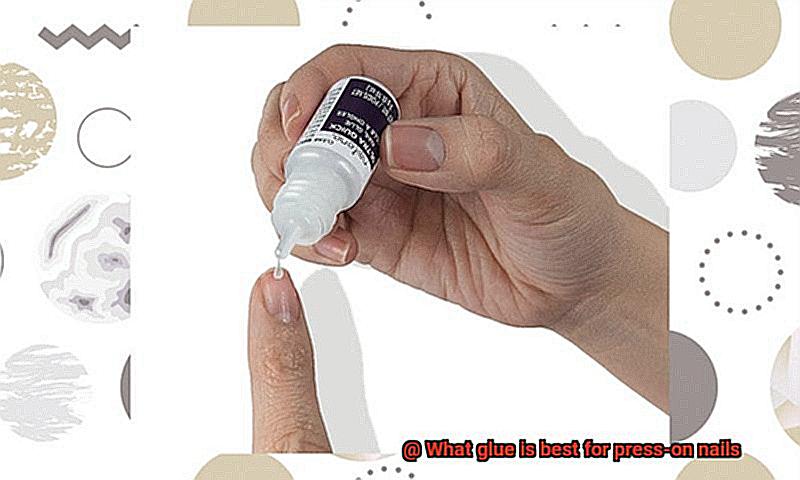
Cyanoacrylate Glue (Superglue)

Cyanoacrylate glue, commonly known as superglue, is a popular choice for press-on nails due to its quick-drying and strong bonding capabilities. It creates a secure hold between the nail and natural nail bed, making it ideal for those who want their nails to stay put for an extended period. However, it can be challenging to remove and may cause damage to your natural nails if not used correctly.
Brush-On Nail Glue
Brush-on nail glue comes with a brush applicator that makes it easy to apply the glue to your nails. This type of glue provides a strong and long-lasting hold, making it perfect for those who want their press-on nails to last for an extended period. However, it takes longer to dry compared to cyanoacrylate glue, so you need to be patient when waiting for it to set.
Dual-Adhesive Tabs
Dual-adhesive tabs are pre-cut double-sided tapes that provide an instant hold for press-on nails. They are easy to apply and remove without damaging your natural nails, making them an excellent option for those who want a mess-free application process. However, they may not be as strong as other types of glue and may not last as long.
Gel Resin Glue
Gel resin glue is a flexible adhesive that provides a strong hold without damaging your natural nails. It dries clear and is easy to apply with a brush applicator, making it ideal for those who want their press-on nails to look as natural as possible. However, it may take longer to dry compared to other types of glue, so you need to be patient when waiting for it to set.
Acrylic Liquid and Powder
Acrylic liquid and powder are a popular choice for those who want a professional-looking manicure at home. It creates a strong bond between the nail and the press-on nail, making it ideal for those who want their nails to stay put for an extended period. However, it requires a bit of skill and practice to apply correctly, and it may not be suitable for those with sensitive skin.
Cyanoacrylate Glue (Super Glue)
Look no further than cyanoacrylate glue, also known as super glue. This adhesive dries quickly and creates a strong bond between the natural nail bed and press-on nails, ensuring they stay in place for extended periods of time.

But before you start applying this powerful glue, it’s important to keep a few things in mind. Firstly, make sure your natural nail bed is clean and free of any oils or lotions. This will help the glue adhere properly and create a strong bond. Additionally, avoid getting the glue on any other parts of your skin to prevent irritation.
While cyanoacrylate glue may seem like the perfect solution, there are some drawbacks to consider. For instance, removing press-on nails attached with this adhesive can be challenging. Acetone nail polish remover is necessary, but it may take some time and effort to fully dissolve the glue. Furthermore, repeated use of cyanoacrylate glue can weaken and damage your natural nails over time.
Nail Glue
As a fan of press-on nails, you know that choosing the right nail glue is crucial to making them last. With so many options available, it can be overwhelming to decide which one is best for your needs. Let’s break it down and explore the various types of nail glue available.
Cyanoacrylate glue, also known as superglue, is a popular choice for press-on nails due to its strong bond and quick-drying properties. However, this type of glue can be quite difficult to remove and may cause skin irritation or damage to your natural nails with frequent use.
If you’re looking for more precision and easier removal, brush-on nail glue might be your best bet. It dries clear and provides a strong hold without damaging your natural nails. Plus, it’s less likely to cause skin irritation than cyanoacrylate glue.
For those who want a temporary hold without damaging their natural nails, nail tabs or adhesive strips are a great option. They’re easy to apply and remove and provide a moderate hold for shorter wear times. However, they may not be as strong as traditional nail glue and may not last as long.
When it comes down to choosing the best type of glue for press-on nails, it’s all about personal preference and individual needs. It’s essential to choose a high-quality product specifically designed for use on nails and follow the manufacturer’s instructions for application and removal.
To ensure long-lasting press-on nails, take care of your natural nails in the process. Consider using cuticle oil or a strengthening treatment before applying press-ons. And when it’s time to remove them, do so gently and avoid ripping or peeling them off.
Adhesive Tabs
Say goodbye to the frustration of messy and time-consuming nail glue application with adhesive tabs. These little wonders are the perfect solution for those who want a quick and easy option for press-on nails.
With adhesive tabs, you don’t have to worry about waiting for drying time – simply apply and go. And unlike traditional nail glue, they won’t leave any residue on your natural nails, making them less messy and more convenient.
While adhesive tabs offer many benefits, it’s important to note that they may not be suitable for heavy or long press-on nails. Additionally, if you have oily nail beds, you may need to take extra care during application to ensure the tabs stick properly.
When using adhesive tabs, it’s crucial to ensure your natural nails are clean and dry before application. Press the tabs firmly onto your nails and then apply your press-on nails over them for a secure hold. And with various sizes and shapes available, you can find the perfect fit for your nails.
Pros and Cons of Each Type of Glue
Press-on nails may be the solution you need. But before you start sticking them on, it’s important to understand the different types of glue available and their respective pros and cons.
Super glue is a popular choice due to its quick-drying and secure hold. However, if not applied correctly, it can cause damage to your natural nails. So, unless you’re experienced in using super glue, it may be best to avoid it.
Nail glue, on the other hand, is specifically designed for use with artificial nails. It’s easy to apply and remove but may not provide the same level of strength and durability as other types of glue.
If you’re allergic to traditional nail adhesives, double-sided tape is a great option. It’s easy to apply and remove but may not hold up well under certain conditions like exposure to water or excessive heat.
Brush-on glue provides a strong hold while still being easy to apply and remove. However, it can be messy and difficult to control when applying.
It ultimately depends on your personal preferences and requirements. If you’re looking for a quick fix that doesn’t require much maintenance, double-sided tape may be the way to go. If you want something more durable, nail glue or brush-on glue might work better for you.
When selecting the best glue for your needs, consider factors such as ease of application, strength, durability, and safety. Remember to properly clean and dry your nails before application – no matter which type of glue you choose.

How to Apply and Remove the Glue Properly
Press-on nails are a quick and convenient way to achieve a salon-worthy manicure without leaving your home. However, it’s essential to know how to apply and remove the glue correctly for the best results. Here are five sub-sections with detailed tips to help you achieve a flawless and long-lasting press-on nail look.
Choosing the Right Glue
Before applying the press-on nails, it’s critical to choose the right type of glue. Look for a formula that is specifically designed for use with press-on nails, as this ensures that it is strong enough to hold the nails in place but also gentle on your natural nails. Some popular options include brush-on glue, which allows for precise application, and quick-drying glue, which sets in seconds for a fast and easy application.
Applying the Glue
When applying the glue, it’s crucial to use just the right amount. Too much glue can cause the nails to lift or become lumpy, while too little may not hold the nails securely in place. Start by cleaning your natural nails with rubbing alcohol to remove any oils or residue. Then, apply a small dot of glue onto the center of the natural nail and spread it out slightly with the tip of the glue nozzle. Be sure to avoid getting any glue on your skin or cuticles as this can cause irritation or even allergic reactions. Finally, press down firmly on the press-on nail for at least ten seconds to allow the glue to set.
Removing the Glue
Removing press-on nails can be tricky if you don’t do it properly. Trying to yank off the nails can damage your natural nails or even cause pain. Instead, soak your nails in warm soapy water for a few minutes to help loosen the adhesive. Then, gently pry off each nail using a cuticle pusher or your fingernails. If you are having trouble removing any stubborn glue residue, you can use an acetone-based nail polish remover to dissolve it.
Preventing Lifting
Lifting is a common problem when it comes to press-on nails. To prevent this, make sure to leave a small gap between the press-on nail and your cuticle. This gap allows for some natural nail growth, which can help keep the nails securely in place. Additionally, be sure to apply the glue evenly across the entire surface of the back of the press-on nail.
Moisturizing Your Nails
After removing the press-on nails and glue, it’s crucial to moisturize your hands and nails. Acetone-based removers can be drying to the skin and nails, so make sure to apply a moisturizing cream or oil to keep them hydrated and healthy.
Tips for Choosing the Best Glue for Your Press-On Nails
When it comes to choosing the perfect glue for your press-on nails, there are a few critical factors to keep in mind. Here are five tips to help you make the best decision:
Opt for a glue designed for press-on nails
When searching for the ideal glue, make sure to choose one that is specifically designed for use with press-on nails. This type of glue is strong enough to keep the nails in place but safe enough to remove without damaging your natural nails.
Consider the drying time
The drying time of a glue is an essential factor to consider when selecting a product. Quick-drying glues are best if you’re in a hurry and don’t want to wait too long. However, if you’re new to using press-on nails and need some extra time to adjust them, opt for a slower-drying glue.
Find the right balance between strength and gentleness
You want your press-on nails to stay put throughout the day, but you also don’t want to damage your natural nails when removing them. Look for a glue that provides a strong hold while still being gentle enough not to cause any harm.
Check for skin sensitivities
If you have sensitive skin, it’s crucial to select a glue that won’t cause any irritation or allergic reactions. Look for products labeled as “hypoallergenic” or “non-irritating” to ensure that the glue is safe and suitable for your needs.
Read customer reviews
Before purchasing any glue, take some time to read reviews from other customers who have used the product before. Positive reviews can give you confidence in your purchase, while negative feedback can help you avoid products that may cause problems.
Conclusion
In conclusion, press-on nails are a fantastic option for those who want to achieve a flawless manicure without breaking the bank or spending hours in the salon chair. However, selecting the right glue is crucial to ensure your press-on nails stay put and look fabulous all day long. With so many different types of glue available – from cyanoacrylate and brush-on nail glue to dual-adhesive tabs, gel resin glue, and acrylic liquid and powder – it can be overwhelming to choose which one is best suited for your needs.
When deciding on the perfect glue for your press-on nails, there are several factors to consider, such as ease of application, strength, durability, and safety. Additionally, it’s essential to thoroughly clean and dry your natural nails before applying any type of glue – this will ensure a secure hold that lasts.
Whether you prefer quick-drying options like cyanoacrylate or more gentle alternatives like brush-on nail glue or adhesive tabs, there’s a product out there for everyone. Don’t be afraid to experiment with different types of glues until you find one that works best for you.
Remember: a little bit of research goes a long way when it comes to achieving beautiful press-on nails that look just as good (if not better) than those done at the salon.

